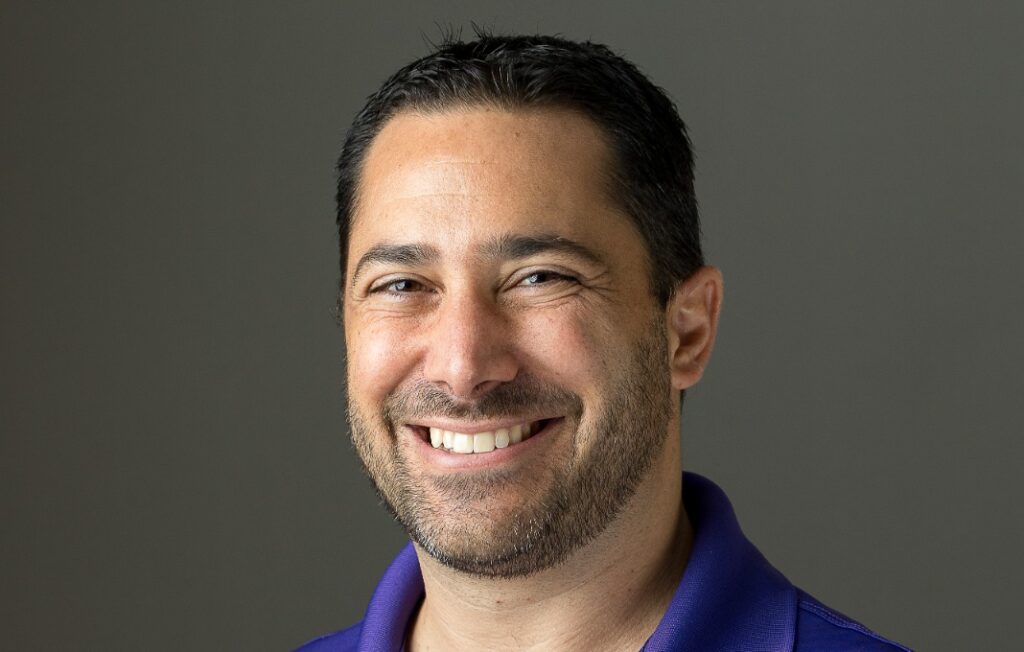Since the Covid pandemic swept the world in 2020, companies have been under tremendous pressure. Initially this pressure took the form of direct responses to the virus—new health protocols, a sudden shift to remote work, and major disruptions to the economy and supply chains. At the same time, companies were forced to contend with a polarized political environment and a long-brewing racial reckoning. In more recent months, as humanity has adapted to the new reality of the virus and vaccines have become prevalent, companies have continued to vie with significant disruptions to the old way of doing business.
Remote work—and its hybrid office companion—is here to stay, labor markets remain tight, inflation has surged, and a recession is all but guaranteed in the coming year. Unionization efforts have gained steam in many places, while executives are simultaneously pushing to control labor costs in an inflationary environment. And trends which already existed before the pandemic, including the rise of automation and AI, have only intensified. All of these forces have fallen in particular on human resources departments and have put CHROs in the hot seat.
None of these forces will magically disappear on January 1, 2023. Companies will still have to contend with them, and a range of new challenges—and opportunities—that may arise. No matter what, workforces, executives and boards will turn to HR leaders for answers.
Talent Shortage
The top three most urgent issues for CHROs going into 2023, according to John Bremen, managing director and chief innovation and acceleration officer at WTW, are “talent shortage, talent shortage and, of course, talent shortage. There aren’t going to be a lot of issues for 2023 that are not part of that umbrella. It’s like the mother of all issues.” Labor markets remain incredibly tight, and wage inflation continues to be an issue for companies. While it may sound paradoxical to talk about a talent shortage when a recession is in the offing, Bremen notes that even during the Great Recession in 2008, which was likely much more severe than the next downturn will be, there were still talent shortages for specific roles and skillsets.
Persistently high quits rates and wages elevated by inflation likely mean the labor market will continue to be tight, especially in key categories. Notably, he adds, many of the talent shortages we are now facing were predicted pre-pandemic because of general demographic trends. “There’s 80 million Boomers in the U.S.,” he says, “but there’s only 60 million Gen Xers. So, believe it or not, even though the U.S. workforce is bigger today than it was in 2010, there’s 11 percent fewer 45- to 54-year-olds.
HR Under Pressure
In the face of global economic and political pressures, CHROs must remember to take care of their function and ensure they’re bringing the most powerful tools to bare on problems facing their companies. “CHROs need to truly embrace and even love data,” says Florian Pollner, a partner at McKinsey and leader of the firm’s Organization Practice in Switzerland. “They need to genuinely work on common data strategies, how they use this data, how they force—I would almost say—to a certain degree the usage of such data in the function.” This means everything from using predictive tools to fill roles more effectively to improving how HR measures and understands the sentiments of their employee population. CHROs will also need to focus on how they process and communicate that data with teams and leaders outside of HR.
The way CHROs engage with data is also related to a broader theme, Pollner adds, which is that HR continues to be under pressure to become more agile, less of a policy focused function and more of a strategic player. Even today, at many major companies, “priorities are still set predominantly within the functional areas, where resource allocation prioritization is still often done at a mostly annual basis with slight adjustments,” Pollner says. With the rapid changes and volatility in the business world and economy today, that mode of working is outdated, and for organizations to succeed, HR must become more adept at shifting resources and rethinking how the function is organized and operates long-term.
Mental Health
The stresses of the pandemic put mental health front and center for many people, and many companies began implementing or expanding and more heavily promoting mental health programs and support. This focus will only intensify over the coming years, and a recent survey from WTW found that two-thirds of U.S. employers are planning to make mental health and emotional well-being programs one of their top three health priorities for their workforces. Developing and implementing these programs—and socializing their use—will largely be the responsibility of CHROs and HR departments.
In an inflationary environment where CHROs are being pushed to control labor costs, and where employees still feel empowered to search for better opportunities, healthcare offerings, including mental health programs, are a major source of competition between companies. “Healthcare is a huge issue, especially this year with emotional health,” says WTW’s Bremen. “It’s a much more efficient transaction sometimes for a company to provide healthcare benefits than for the employee to buy them on the open market, so a company’s dollar investment can go much further.”
Retainment and Workforce Psychology
High quits rates and a tight labor market have made retention a major issue for many companies. There’s no magic bullet to fix retention. “The workforce still has choice, and demographically there’s just not enough people to match up to the work needs,” says Art Mazor, global human capital practice leader at Deloitte. “Organizations need to keep their ears out and listening and do their best to respond to the interests and what the human experience should be at work.” This means that CHROs can’t simply wait for a shift in economic factors to “flip a switch and say, ‘oh, we’re in charge.’” In particular, boards are looking to CHROs to incorporate long-term bets around sustainability, climate, and equity and inclusion into their organizations.
A total rewards mindset and looking for ways to differentiate companies based on things like compensation, benefits and workplace flexibility is one way. Emphasizing educational and growth opportunities, rather than relying on a fixed corporate ladder and career progression, may be another way CHROs can juice retention.
“The changing psychology of the workforce is probably the most prominent issue in the laps of talent leaders,” says Steve Cadigan, former CHRO at LinkedIn. “It’s expressing itself in different ways: I want more flexibility in my work arrangements. I may leave the company sooner than you’re planning for. The career ladders you built don’t seem to have the same attractiveness to me that they used to.” Many workers today are choosing where to work based on whether they see themselves learning and growing in their position. That puts pressure on CHROs to guarantee that their companies are providing substantive learning and development opportunities for employees at all levels.
The Hybrid and Remote Dilemma
While the pandemic yanked many companies into the world of remote work overnight, forcing them to come up with processes and tools at a breakneck speed, the fallout from this shift has not settled. Remote work is here to stay, but what is unclear for most companies is what this means long-term. What is the definition of hybrid? How much time in the office is beneficial? How much is too much? How much monitoring do remote employees need? Are offices necessary at all? What will employees tolerate? The issue simply is not settled, and CHROs will need to continue to be nimble and responsive to the needs of their companies and their workforces.
Even at companies that have made progress in establishing a new business-as-usual approach to hybrid and remote work, there remains ample work to be done and new, previously unconsidered challenges.
“We’re finally appreciating that organizations are going to have to set up guardrails for how much you work, how long you work, when you work,” says Cadigan. This puts CHROs in the position of moderating between workforces that are asking for more flexibility and executives who may want a total return to offices or who don’t have faith in the ability of their teams to deliver remotely. At the same time, remote and hybrid work can lead to burnout and other problems in their own right. It means that HR teams must take more seriously questions such as whether it is appropriate to send emails at night or on weekends, for instance. “There’s increasing research around sleep and the capacity to innovate and create and deliver,” notes Cadigan. “X-factor performance is really tied to rest and turning off. That’s a big one people are wrestling with. The ground is still moving with hybrid and remote work.”
“Moderation is key,” says Mazor. Hard turns toward total return to the office or totally remote work are likely to be met with resistance, which puts CHROs in the position of navigating a middle path for companies. For organizations now grappling with greater geographic dispersion than they’ve previously dealt with, this can be unfamiliar territory. Organizations that have historically been fairly top down and hierarchical may particularly experience growing pains in this area. However, rather than being a challenge, this can also be a creative opportunity for CHROs and organizations to reevaluate how they work and why, and to “create an experience that allows folks to feel empowered and enables them to be as productive as possible, provides balance for different types of work, and does get suited toward some mode of self-empowerment with certain guardrails.”
Building Culture
Questions around retainment, hybrid and remote work and the changing role of HR tend to coalesce into a fundamental question about what corporate culture is and should be in the post-pandemic world. “Organizations have an ongoing purpose that is part of making money,” Mazor says. “But it’s not making money at the expense of the planet or the workforce in terms of inclusion, mental health, well-being.” Many organizations have already begun a profound shift “from oversight to empowerment,” which Mazor argues is the difference between managers who are doing the “basics” of standard management practices versus “empowering their teams to be more innovative, to be more competitive with market, and to be more aware of what’s happening within their various locales and the ways in which the organization can and should step-up to play different roles inside of communities.”
In many cases, this is requiring organizations to adjust how they think about promoting people to management. In the past many companies focused on elevating people to management positions based on whether they excelled in their particular craft. However, this can be a poor method for developing real leaders. “There’s a real distinction between managers who manage according to certain basic processes and people who are truly leading teams, meaning they create fellowship, they drive a sense of inclusivity that shifts toward empowering teams to be able to make choices and decisions and seek out the best and greatest ideas from the full team, rather than playing a hierarchical game,” says Mazor.
Beyond Inclusion
Many companies have made great strides in their efforts to promote diversity and inclusion. However, equity—the third element of DEI initiatives—can be a greater challenge and is where many organizations may now need to focus their attention. “It means we’re doing the hard work of looking at programs, policies, processes, experiences, and looking for the best opportunities to create equitable positions for the organization,” Mazor says. These sorts of positions need to enable the workforce “to truly feel as though they have equal access to opportunities and the coolest projects in the organization.” This also means carefully analyzing things such as compensation and legacy programs or practices that may work against equity.
Naturally, it’s impossible to predict everything that 2023 will hold. However, it’s a near certainty that these issues will be on the agenda for CHROs at every company. The organizations that tackle these challenges head on and respond nimbly to a changing world will be the ones who win. To succeed, CHROs will have to maintain focus and resiliency, while being realistic about their capacities and the potential for burnout after years of high pressure. “It’s like being a psychiatrist,” says Pollner. “You can’t always help others. At some point you need to be helped and help yourself. That’s an important theme for large organizations. They’re in constant overload.”








